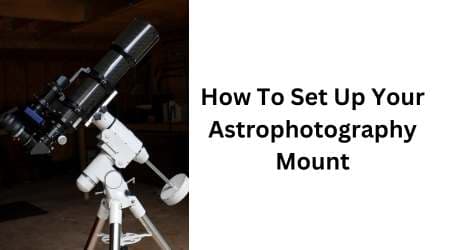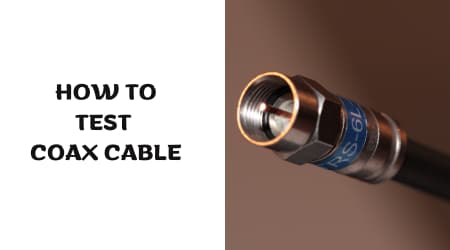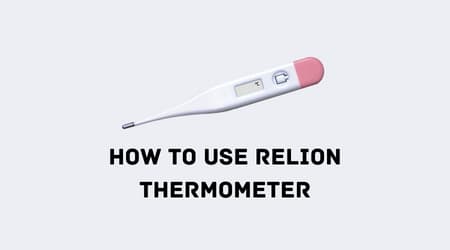To set up your astrophotography mount, start by leveling and polar aligning your mount. Then attach your camera and lens, and make sure the mount is properly balanced.

Astrophotography is a fascinating and rewarding hobby that requires proper equipment and technique. One of the most important components of astrophotography equipment is the mount. Without a well-functioning mount, it is nearly impossible to capture sharp and detailed photos of the night sky.
Setting up your astrophotography mount may seem daunting, but with the right steps and tools, you can achieve great results. In this article, we will guide you through the process of setting up your mount, from leveling and polar alignment to attaching your camera and finding the right balance. By the end of this article, you will be ready to begin capturing stunning images of celestial objects.
How To Set Up Your Astrophotography Mount
Astrophotography requires steady and accurate equipment, which means you need to invest in a reliable mount for your camera. Getting a good mount could be a game-changer for your astrophotography shots. In this post, we’ll take a closer look at how to set up your astrophotography mount.
Setting Up Your Mount For Astrophotography
If you're new to astrophotography, the equipment setup can be daunting. But don't worry, we've got you covered! In this section, we'll walk you through the steps of setting up your mount for astrophotography.
Understanding The Equipment Required
Before getting started with the setup, let's have a look at the equipment required:
- Telescope
- Mount
- Camera
- Camera adapter
- Power source
- Counterweight(s)
Choosing The Right Location
Choosing the right location is crucial when setting up your mount for astrophotography. Here are a few key points to keep in mind:
- Look for a location with minimum light pollution
- The location should be dry and away from any moisture
- Avoid setting up your mount on a hill or an uneven surface
Setting Up An Equatorial Mount
An equatorial mount is a popular choice for astrophotography as it compensates for the earth's rotation. Here's how to set up an equatorial mount:
- Align your mount with the polar star
- Level the mount
- Attach the telescope to the mount
- Set the latitude and time on the mount
- Balance the mount using counterweights
Setting Up An Alt-Azimuth Mount
An alt-azimuth mount is simpler to set up than an equatorial mount, but it does not compensate for the earth's rotation. Here's how to set up an alt-azimuth mount:
- Level the mount
- Attach the telescope to the mount
- Point the mount at the celestial object you want to photograph
- Manually track the object as it moves using the mount's slow-motion controls.
Balancing The Mount
Balancing your mount is crucial for stable astrophotography. Follow these steps to balance your mount:
- Attach the telescope and camera
- Move the telescope to the highest point in the sky
- Adjust the counterweights until the telescope is balanced
- Recheck the balance at different angles
By following these steps, you'll have a good setup for your astrophotography. Happy photographing!
Polar Alignment
Why Polar Alignment Is Essential
Polar alignment is an essential procedure in astrophotography. It helps eliminate star trails and ensures quality astrophotography by aligning the polar axis of your mount with the earth's rotation axis. Here are important points to note for a better-understanding of polar alignment:
Understanding The Polar Axis And Declination Axis
- Polar axis: The polar axis lies at a right angle to the declination axis, aiming straight up to the celestial pole. It represents the earth's rotational axis and needs to be perfectly aligned with the celestial pole for proper astrophotography.
- Declination axis: It is responsible for moving the mount's telescope perpendicular to the polar axis, following objects' movement in the night sky.
How To Achieve Accurate Polar Alignment
Let's dive into how to achieve an accurate polar alignment for your astrophotography mount:
- Setting up the mount: First, make sure you have a sturdy setup and level the mount's head to the horizon.
- Rough polar alignment: Roughly align the polar axis with the north star, polaris, using the altitude and azimuth adjustments on your mount.
- Fine-tune polar alignment: Use a polar alignment scope by positioning polaris in the scope's crosshairs. The scope overlays declination and polar axes, enabling you to accurately align the mount.
- Check your alignment: You can check if your alignment is accurate by taking a test picture of a star with a long exposure. If your picture depicts a pinpoint star, you've successfully aligned your astrophotography mount.
Polar Alignment Apps And Tools
Using apps and tools is an excellent way to make polar alignment more accurate and quicker. Here are some popular ones:
- Polaraligner: This app calculates the precise position of polaris, enabling you to adjust your mount to achieve an accurate polar alignment without the need for star charts.
- Polemaster: This device attaches to your mount and provides you with a live video feed, making polar alignment quicker and more efficient.
- Starsense explorer: A combination of software and hardware that works alongside your smartphone to guide you through the polar alignment process.
Now that you understand the importance of polar alignment and how to obtain an accurate alignment, you can confidently begin capturing stunning astrophotography with your mount.
Tracking The Night Sky
Understanding The Importance Of Tracking
A crucial aspect of astrophotography is tracking the night sky as it moves. Without tracking, long exposure shots will result in blurry images due to the earth's rotation. Here are some reasons why tracking is essential for astrophotographers:
- To capture crisp and clear images of celestial objects.
- To take stunning, long exposure shots of star trails or galaxies.
- To allow for longer exposures without star trails in the image.
Differences Between Sidereal, Lunar, And Solar Tracking
There are different kinds of tracking systems available for astrophotography, each with their own benefits and shortcomings. Here are the primary differences between sidereal, lunar, and solar tracking:
- Sidereal tracking is used to track the rotation of the earth and is the most commonly used for astrophotography. It can accurately track the motion of the celestial objects you are photographing.
- Lunar tracking is used for capturing the moon's movement across the night sky. It is different from sidereal tracking as the moon's motion is not in sync with the sidereal speed.
- Solar tracking is used to track the movement of the sun across the sky. It allows you to capture stunning shots of the sun's corona during a solar eclipse.
How To Align Your Mount To The Celestial Object
Aligning your mount to the celestial object is essential to ensure that your images are sharp and in focus. Here are the steps to follow for alignment:
- First, set up your mount on a sturdy surface and level it.
- Align your mount's polar axis with polaris, the north star, using a polar scope.
- Use the mount's altitude and azimuth adjustments to further align it with the celestial object you are photographing.
- Fine-tune your alignment using your camera's live view by adjusting the focus and framing for the best composition.
Troubleshooting Tracking Issues
Despite your best efforts, there may be times when your mount's tracking fails, resulting in blurry images. Here are some common tracking issues and ways to troubleshoot them:
- Polar alignment is off: Realign your mount with polaris to rectify this issue.
- Power issues: Check your mount's power source and battery level, ensuring that it has enough power to last the entire session.
- Mount stability: If your mount's legs aren't sturdy or the ground isn't level, it can affect the tracking. Make sure to set up the mount on a stable surface.
- Equipment issues: Check that your camera is securely attached to the mount and properly balanced.
By understanding the importance of tracking, the differences between various tracking systems, and how to align your mount with celestial objects, you can capture stunning astrophotography shots. Remember to troubleshoot any tracking issues that may arise to ensure your images are clear and in focus.
Read Also: Best Astrophotography Mount Of 2023 – Reviewed
Techniques For Capturing Stunning Astrophotography Images
Astrophotography is the art of capturing stunning images of the night sky. With the right equipment and techniques, you can create breathtaking photos of stars, galaxies, and other celestial objects. In this post, we will be focusing on one critical piece of equipment for astrophotography – the mount.
Additionally, we'll discuss the techniques for capturing stunning astrophotography images, including exposure and iso settings, tips for capturing star trails, the right focal length and aperture, and the importance of image stacking in astrophotography.
Understanding Exposure And Iso Settings
Exposure settings are crucial for astrophotography. Here are some essential points to consider when setting exposure:
- Keep the aperture as wide as possible to let more light into the lens.
- Slow down the shutter speed to allow for more light time to hit the sensor.
- The ideal iso setting is typically between 800-3200, depending on the camera's capacity. It is best to test the settings before nightfall.
Tips For Capturing Star Trails
Star trails can add a unique, artistic element to your astrophotography. Here are specific tips to help you capture those stunning star trails:
- Use a shutter release cable or timer remote to minimize shaking and blur.
- Choose a location with minimal light pollution to make the stars more visible.
- Use a wide-angle lens to capture a wider view of the night sky.
Choosing The Right Focal Length And Aperture
The focal length and aperture settings significantly impact the quality and outcome of your astrophotography. Here's what you need to consider:
- Choose a wide-angle lens with a low aperture number (f/2.8 or lower) to let in more light.
- Increase the focal length when capturing dimmer objects.
- Start with a focal length of 14mm for a full-frame camera and 11mm for aps-c cameras.
Importance Of Image Stacking In Astrophotography
Image stacking is an essential technique that can significantly enhance your astrophotography. It involves combining multiple images into one to produce a more clear and detailed image. Here are some crucial points to consider:
- Use software specifically designed for image stacking, such as pixinsight or deepskystacker.
- Take multiple photos of the same subject with the same settings to stack later.
- Use the median stacking method for reducing noise in astrophotography.
The right mount, along with the right techniques, will significantly enhance your astrophotography skills. With the tips mentioned above, you will be able to take amazing images of the night sky and impress your friends and family with your skills.
Happy shooting!
Troubleshooting Common Issues
Astrophotography is an exciting and rewarding hobby that can provide stunning images of the night sky. However, like any photography, it can come with its challenges. In this section, we'll explore some of the common issues that astrophotography mount users face and provide tips for troubleshooting these issues.
Our subheading today is “troubleshooting common issues” with two h3 headings under it: “common problems and how to fix them” and “dealing with wind and vibration” and “tips for dealing with light pollution. “
Common Problems And How To Fix Them
Astrophotography mount users can encounter several issues when capturing images of the night sky. Here are some common issues and their solutions:
- Poor quality images – if your images are blurry or out of focus, ensure that you have correctly collimated your telescope and aligned your mount. Additionally, check your camera settings and make sure you're using the appropriate iso, aperture, and exposure time. Finally, ensure that your mount's tracking is accurate by aligning it with a bright star.
- Mount tracking issues – if your mount isn't tracking accurately, check that it's correctly aligned and properly balanced. Verify that the mount's settings are correct, and make sure it's set to the correct sidereal tracking speed. If none of these strategies work, consider contacting the manufacturer or checking online forums for advice from experienced users.
- Equipment issues – if equipment such as your mount, telescope or camera is malfunctioning, isolate the equipment that is causing the issue and troubleshoot based on the manufacturer's instructions or advice from experienced users.
- Weather issues – weather, including humidity, dew, and temperature changes, can impact your images' quality. Consider using a dew heater or purchasing a camera cover to protect your equipment, and avoid astrophotography in excessively windy, rainy, or hazy conditions.
Dealing With Wind And Vibration
Wind and vibration can negatively impact astrophotography images, causing blurring and distortion. Here are some tips for dealing with these issues:
- Invest in a sturdy mount – a sturdy mount is essential for astrophotography and can help prevent wind and vibration from impacting your images. Consider a heavy-duty tripod or pier, or use sandbags or other weights to secure the tripod legs.
- Find a sheltered location – look for a spot with natural or man-made obstructions to shield your equipment from the wind, such as hedges, walls or buildings.
- Use a windbreak – windbreaks can help prevent wind from impacting the quality of your images. Consider purchasing a purpose-built windbreak or making your own using lightweight materials.
Tips For Dealing With Light Pollution
Light pollution is a significant challenge for astrophotographers but can be managed with appropriate equipment and techniques. Here are some tips:
- Use a light pollution filter – a light pollution filter can help filter out unwanted light and reduce its impact on your images.
- Find a darker location – look for a location away from streetlights and other sources of light pollution. Consider traveling to a national park or wilderness area or a rural location.
- Shoot during the “astronomical darkness” phase – plan your shoot during the “astronomical darkness” phase, when the sun is more than 18 degrees below the horizon, and the sky is darkest. This phase is typically an hour after sunset or an hour before sunrise.
Astrophotography mount users can experience a range of issues, from poor quality images to equipment malfunctions. With appropriate troubleshooting and corrective steps, astrophotographers can capture stunning photos of the night sky.
Advanced Techniques For Astrophotography Mount Users
Are you an astrophotographer looking to take your skills to the next level? If you're already familiar with astrophotography mounts, this post will provide you with some advanced techniques that can help you capture even more stunning images. In this section, we'll cover some essential techniques, including using guiding and autoguiding, polar scope alignment, remote control, and wireless connectivity, as well as tips for capturing nebula and galaxy images.
Using Guiding And Autoguiding Techniques
Guiding and autoguiding can help you achieve more accurate tracking of your subject, resulting in sharper, clearer images. Here are some points to consider when using guiding and autoguiding techniques:
- Guiding involves manually adjusting your mount to keep your subject centered in the field of view.
- Autoguiding automates the guiding process, using a guide camera, software, and a computerized mount.
- Guiding and autoguiding require a compatible mount, guide camera and software.
- By using the autoguiding technique, you can fine-tune your adjustments, making your images sharper and more precise.
Polar Scope Alignment Methods
Polar scope alignment is a crucial step in ensuring accurate alignment of your mount. Here are some key points to follow when using polar scope alignment methods:
- Double-check your latitude and longitude before beginning the alignment process.
- Use a polar scope to align your mount properly. Stellarium, a free astronomy software, can help you determine the polar alignment position of your mount.
- Use a polar finder chart and adjust your mount's altitude and azimuth until you find the alignment star.
- Make small adjustments to fine-tune your alignment to improve tracking accuracy.
Remote Control And Wireless Connectivity
Remote control and wireless connectivity give you more flexibility in positioning your camera and mount. Here are some tips to help you use remote control and wireless connectivity effectively:
- Choose a remote control with a range that fits your needs.
- Use a mobile device to control your mount and camera, or invest in a dedicated wireless controller.
- Make sure all your equipment is compatible with the wireless connectivity option you choose.
Tips For Capturing Nebula And Galaxy Images
Capturing clear, detailed images of nebulae and galaxies can be challenging, but the following tips can help you succeed:
- Use a large aperture to allow more light to enter the camera lenses.
- Adjust your camera's iso and exposure settings to capture fainter details.
- Use a narrowband filter to isolate specific wavelengths of light, allowing you to capture images of nebula that may otherwise go undetected.
These advanced techniques for astrophotography mounts can help you take your astrophotography skills to new heights. With practice and patience, you'll be able to take stunning images of space that are sure to amaze and inspire anyone who sees them.
Frequently Asked Questions Of How To Set Up Your Astrophotography Mount
What Are The Best Astrophotography Mounts For Beginners?
The sky-watcher eqm-35 and celestron cg-4 are great choices for beginners as they are affordable and easy to set up. These mounts are sturdy and provide stable tracking for astrophotography.
What Is The Importance Of Polar Alignment In Astrophotography?
Polar alignment is crucial in astrophotography because it helps to eliminate star trailing by aligning the mount's axis with the earth's rotation axis. A good polar alignment ensures that your images are sharp and properly tracked.
How Do I Properly Balance My Astrophotography Mount?
To properly balance your mount, place the counterweights to balance the weight of your camera and any accessories on the other side. Adjust the position of the counterweights until the mount is perfectly balanced horizontally and vertically before starting your imaging session.
What Is A Guiding System In Astrophotography?
A guiding system is a device that tracks a guide star to precisely control the mount's movement. A guide camera captures images of a guide star, and the guiding software uses these images as a reference to send corrections to the mount, ensuring accurate tracking.
Should I Use A Polar Scope For Polar Alignment?
Using a polar scope helps to simplify and speed up the polar alignment process. With a polar scope, you can accurately align your mount with the pole star, making it easier to eliminate any tracking errors and capture sharp images.
Conclusion
To sum up, setting up your astrophotography mount requires a bit of patience and a willingness to learn. Once you have the right mount for your telescope and have mastered the setup process, you’ll be ready to capture awe-inspiring images of the night sky.
Remember to pay close attention to the weight of your equipment and choose a mount that can handle the load. Additionally, use a sturdy tripod and be sure to level your mount before use. Don’t forget to also consider the type of astrophotography you’ll be doing and adjust your mount accordingly.
By following these guidelines, you’ll be well on your way to capturing stunning images of the stars. Happy stargazing!





